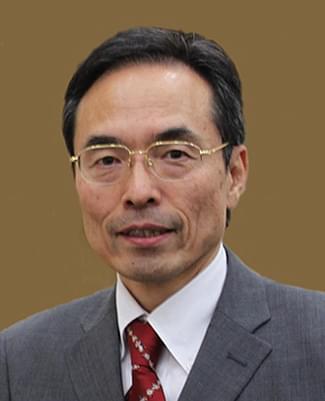
Member
University Professor

INOUE Kazuhide
University Professor of Institute for Advanced Study, Kyushu University
Specialized Fields
Neuropharmacology, Neurochemistry
Microglia and Intractable Chronic Pain
The roles of ATP receptors
The roles of ATP receptors
Message
My research interests include the physiological functions of ATP receptors, glial-neuron interactions, and the pathophysiological functions of glial cells. In 2003 (Nature) and 2005 (Nature), we reported that spinal microglia modulate synaptic transmission and that this is the pathogenesis mechanism of allodynia, the main symptom of neuropathic pain. Since then, the number of subsequent papers has increased exponentially, and ``glia and pain'' has become a global trend. More recently, it has been revealed that microglia are not only bad, but also good, with a subset contributing to the healing of neuropathic pain (Science 2022). The importance of astrocytes in central pain control has been newly discovered, and it is becoming clear that glial populations, which were once thought to be responsible for static functions, actively control central functions in a wide variety of ways.In order for Kyushu University to become a truly international research and education center, we must have world-class research capabilities and a diversity education system with research backbone. The mission of the Institute for Advanced Studies is to become an incubator that raises such human resources, and to present the concept with high ideals in a long span for the research and education scenes that are likely to fall into a short-sighted perspective. While I was performing my duties at the university headquarters, I continued to seek such a high-ranking ideal function from the Institute for Advanced Studies, and now I would like to approach the ideal function step by step as a member of the Institute for Advanced Study.
Academic Background
- March 1973
- School of Pharmaceutical Sciences , Kyushu University
- March 1975
- Graduate School of Pharmaceutical Sciences, Kyushu University
- July 1985
- Ph.D
Occupation Background
- April 1978
- The Ministry of Health and Welfare, Department of Pharmacology, Center for Biological Safety and Research, National Institute of Health Sciences
- August 1985 ~ September 1987
- Visiting fellow, National Institutes of Health, USA
- March 1991 ~ February 1992
- Honorary Research Fellow, University College London
- October 2002
- Division Head of Metabolism Biochemistry, National Institute of Health Sciences
- January 2005
- Professor of Graduate School of Pharmaceutical Science, Kyushu University
- May 2009
- Distinguished Professor, Kyushu University
- April 2010 ~ March 2014
- Dean of Graduate School of Pharmaceutical Science, Kyushu University
- October 2014 ~ September 2020
- Executive Vice-President, Kyushu University
- October 2020
- University Professor of Institute for Advanced Study, Kyushu University
Academic Awards・Awards
- F.Y. 2007
- Commendation for Science and Technology by the Minister of Education, Culture, Sports, Science and Technology
- F.Y. 2010
- Ebashi Setsuro Award, The Japanese Pharmacological Society
Medal from His Majesty the Spanish Emperor as an honor of lifelong foreign member of Royal Academy of Pharmacy - F.Y. 2013
- The Pharmaceutical Society of Japan Award
- F.Y. 2014
- The Medal with Purple Ribbon
- F.Y. 2024
- The Order of the Sacred Treasure, Gold Rays with Neck Ribbon
Publication List
- M. Tsuda, et al. P2X4 receptors induced in spinal microglia gate tactile allodynia after nerve injury. Nature 424, 778-783, 2003
- J.A.M. Coull, et al. BDNF from microglia causes the shift in neuronal anion gradient underlying neuropathic pain. Nature 438, 1017-1021, 2005
- S. Koizumi, et al. UDP acting at P2Y6 receptors is a mediator of microglial phagocytosis. Nature 446, 1091-1095, 2007
- Nakaya M, et al. GRK6 deficiency in mice causes autoimmune disease due to impaired apoptotic cell clearance. Nat Commun 4:1532, 2013
- T. Masuda, et al. Transcription factor IRF5 drives P2X4R+-reactive microglia gating neuropathic pain. Nat Commun 5:3771, 2014
- M. Shiratori-Hayashi, et al. STAT3-dependent reactive astrogliosis in the spinal dorsal horn underlies chronic itch. Nat Med 21:927-31, 2015
- S. Koyanagi, et al. Glucocorticoid regulation of ATP release from spinal astrocytes underlies diurnal exacerbation of neuropathic mechanical allodynia. Nat Commun 7:13102, 2016
- Y. Hayashi, et al. BK channels in microglia are required for morphine-induced hyperalgesia. Nat Commun 7:11697, 2016
- T. Masuda, et al. Dorsal horn neurons release extracellular ATP in a VNUT-dependent manner that underlies neuropathic pain. Nat Commun 7:12529, 2016
- Inoue K and Tsuda M. Microglia in neuropathic pain: cellular and molecular mechanisms and therapeutic potential. Nature Rev Neurosci 19(3):138-152, 2018
- Y. Kohro, et al. Spinal astrocytes in superficial laminae gate brainstem descending control of mechanosensory hypersensitivity. Nat Neurosci 23(11):1376-1387, 2020
- K.Kohno, et al. A spinal microglia population involved in remitting and relapsing neuropathic pain. Science 376, 86-90, 2022

